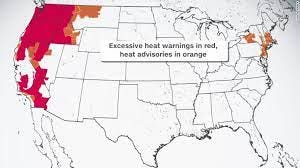Ep. 15 - Alexandra Paul, Eating Disorders, and Surprising Science
What to not expect when you’re not expecting
When I do an interview with someone who has dealt with a lot of depression, I do a lot of nodding. If they’re a middle-aged dude, all the more nodding because it tends to be very familiar with my own experiences. Not so the case with something like eating disorders, which I understand pretty well in theory but I have no direct experience.
I think a good number of other people are in the same boat, where you understand the basic definitions but maybe not what life is like with these things day to day. So when I interviewed Alexandra Paul, I concentrated on the lived experience of her dealings with anorexia and bulimia.
The other conversation in the show, with Dr. Jillian Lampert, really blew my mind, though. I had always thought that if you had an eating disorder, you were more or less doomed to deal with it as a chronic, top-of-mind condition for the rest of your days. Not necessarily so, said Dr. Lampert, who talked about fairly recent scientific findings that point to more effective long-term treatment. In the episode, she also talks about the research pointing to hypersensitivity about things like bright lights, loud sounds, and even clothing tags being indicators that a person would be more susceptible to common eating disorders.
In the episode, I basically stop everything and say, “Wait, what?” about some of this stuff because it was totally new to me. “Yep,” she pretty much said. And she had some very fascinating articles to back it up:
Reward sensitivity article: https://jeatdisord.biomedcentral.com/articles/10.1186/s40337-017-0138-2
Sensation and emotion study in progress: http://eatingdisorders.ucsd.edu/research/our-research.html
Sensation study: https://www.ncbi.nlm.nih.gov/pmc/articles/PMC3955712/
Another sensation study: https://www.ncbi.nlm.nih.gov/pmc/articles/PMC7230430/
Bodily sensations study: https://pubmed.ncbi.nlm.nih.gov/29483865/
Sensation study looking particularly at disgust: https://www.ncbi.nlm.nih.gov/pmc/articles/PMC6759364/
Broader study on interoceptive awareness (awareness of body cues): https://www.ncbi.nlm.nih.gov/pmc/articles/PMC7927286/
Genetics and neurobiology: https://pubmed.ncbi.nlm.nih.gov/21243469/
And because I love research and also campiness, here’s Alexandra Paul in her first acting appearance, as mentioned in this episode, brawling with Daryl Hannah in Paper Dolls:
Kids in crisis
An important article in the NYT about the rapidly growing mental health crisis among children under age 13.
“I anticipate that we will see this crisis grow in the fall as kids return to school and are trying to adjust to making up for a year of lost development,” said Dr. Jenna Glover, a child psychologist at Children’s Hospital Colorado in Aurora.
Among children who die by suicide, there are stark racial disparities. The rate of suicide in Black children under 13 has been increasing over the last decade and is two times higher than among white children. In two editorials published on Monday in JAMA Pediatrics, the authors called on funding agencies and journals to prioritize research on Black youth suicide; and emphasized the need for preventive efforts that target stigma and institutional racism.
Among the big problems that are resulting from the crisis is the real lack of beds in mental health care facilities, meaning kids have to wait for up to a month before getting intensive help.
It’s common for teenagers to be screened for mental health issues at routine physicals but much less common for younger kids. That needs to change.
Let’s talk about the weather instead. That’s pleasant, right? Whoops.
I haven’t seen any articles about this but maybe they’re out there. It’s more difficult to manage chronic disorders like depression and anxiety when you FEAR THE VERY SKY.
I’m from the Seattle area where any day of the year could be 50 degrees and overcast. Wouldn’t be surprising to see that in July, wouldn’t shock you to see it in December. And sure, there were always variations. It might drop below 32 just long enough that the persistent drizzle turned to snow and then school got canceled instantly because there are hills everywhere for unprepared bus drivers to careen down. It might get hot in the summer but not enough for people to get central a/c in their homes or even buy a lot of window units.
It got hotter in Seattle than Atlanta has ever been. It got hotter in Portland than Houston has ever been. 110 in Olympia, 108 in Seattle.
I wonder and worry about how people with anxiety and depression are doing in those areas when the heat simply cannot be escaped. When it overwhelms the temperature norms and the ability to manage human existence under those conditions.
Now, it gets stupid cold in Minnesota, where I currently live. A couple years ago, it hit minus 27, which doesn’t even seem physically possible or, indeed, legal. In that weather, we stayed inside. You could still go places, it just meant scampering from the house to the car and the car to some other building. When it’s regular amounts of cold, you dress in layers, you have scarves, it’s fine. But in blistering heat, you can’t do that stuff.


One of the reasons I left Seattle, despite its pleasantly mild temperatures, is that I had begun to feel like it was becoming uninhabitable: so expensive, so crowded, so impossible. I can’t imagine what that claustrophobia would be like today.
Guy finds 120-year-old time capsule in his house
Among the finds, undeveloped glass plate negatives of photographs.




